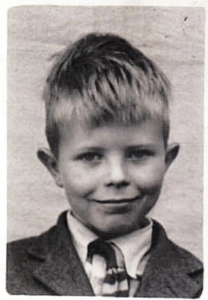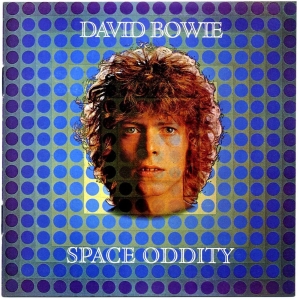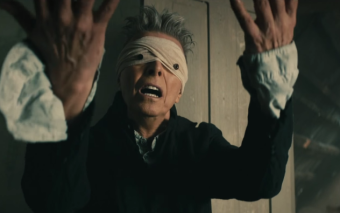On January 10, 2016, the world lost a music icon. David Bowie was undeniably one of the biggest names in music history, and his unexpected passing, the result of a secret, 18-month long battle with cancer, has shaken the Western world. Here, we look back at the incredible life of a person that was not afraid to be himself, the king of reinvention, and whose death devastated many for whom Ziggy Stardust or the Thin White Duke were icons of their generation.


Originally named David Robert Jones, David Bowie was born on January 8, 1947, in Brixton. From a young age, Bowie was not afraid to test the waters of anything fascinating to him, which led to several unique experiences including a year studying under a Tibetan lama on the way to monkshood. Growing bored with this endeavour, it was clear he needed an outlet for his creativity, which led to explorations of London’s artistic scene in mime, cinema, and mixed media. Bowie was intrigued by the diverse nature of music, and at thirteen years old his love of London West End jazz inspired him to learn the saxophone under the tutelage of Ronnie Ross. Bowie’s pop and mod inspirations came later, as he played in a series of bands during his adolescence. These included the Kon-Rads, The King Bees, the Mannish Boys and the Lower Third. His lack of success in these bands disheartened Bowie, but as we know, eventually led the way to a legendary career.
At 19 years of age Bowie changed his name, the first of many reinventions, and released several singles. It was not until 1969 that Bowie emerged on the charts with Space Oddity, and the character of Major Tom. The persona was a fictional astronaut that had deserted Earth, preferring to float through space. A very well received character, Major Tom reappeared throughout Bowie’s career.
Bowie released a staggering 25 studio albums during his life, not including compilation and live albums. The 1971 album, The Man Who Sold The World, was Bowie’s first, and with it began the style of music known as glam-rock. Bowie’s son Duncan Zowie Haywood Bowie was born to he and his wife Angela.

1972 saw the emergence of album Hunky Dory, from which the world was given singles ‘Changes’ and ‘Life on Mars’, and perhaps Bowie’s most well-known persona, Ziggy Stardust, in is albums The Rise and Fall of Ziggy Stardust and The Spiders from Mars. Stardust’s iconic lighting bolt face and crimson red mullet, along with his multi-coloured, androgynous jumpsuit, portrayed a bisexual rock star alien that was the midway point between humans and aliens. The Ziggy Stardust persona was formed at the same time as Bowie came out publicly as gay, and redefined rock‘n’roll with his spectacular live concerts. This album has sold 7.5 million copies internationally, and is still considered one of the greatest albums of all time. Bowie had made the transition from celebrity to superstar.
Not one to stop at merely revolutionising a genre of music, Bowie became involved in music producing and film. Albums produced by Bowie include Lou Reed’s Transformer, and several albums by Iggy and the Stooges. In the same year of 1973, Bowie’s sold out USA Ziggy tour was ended abruptly with his announcement that
“Of all the shows on the tour, this one will stay with us the longest because not only is this the last show of the tour, but it is the last show we will ever do.”

The surprise was shared by fans and Bowie’s band alike, and led the way for another reinvention, this time a darker version of Ziggy Stardust named Aladdin Sane. This new character and album was similar to Stardust, but influenced by Bowie’s US tour, and was Bowie’s personal reaction to his brother’s diagnosis of schizophrenia. When the name is expanded, it turns into an anagram of “a lad insane.” With every reinvention came a complete change in Bowie’s music, and this transition meant that after October 1973 album Pin-Ups Bowie would never again record another album with guitarist Mark Ronson, or producer Ken Scott, both of whom were prominent in past albums.
It is obvious that Bowie was unafraid of change, but he was unique in that he only changed on his own terms, not those of his fans, or to respond to changes in popular music. His angst fueled, grungy April 1973 album Diamond Dogs stood out against the quickly increasing popularity of disco music, as did this album’s persona of Halloween Jack, described by Bowie as “real cool cat”. 1975 saw the recording of compilations, including one with John Lennon, Fame, that landed Bowie his first No.1 single in the U.S. Bowie also starred in the Nic Roeg science fiction film The Man Who Fell To Earth, a cult classic, recorded the album Station to Station, and embarked on the White Light Tour with Iggy Pop alongside. Though Bowie’s career was only jumping from height to height, Bowie admitted that it was one of the lowest points of his personal life. Emerging for the Station to Station album and White Light Tour, while Bowie professed to living on “red peppers, cocaine and milk,” was his darkest ever persona, the Thin White Duke.

“A very Aryan, fascist-type; a would-be romantic with absolutely no emotion at all but who spouted a lot of neo-romance” – Bowie on the Thin White Duke
Bowie relocated to Berlin with Iggy Pop in 1977. Bowie wrote what he knew, and sang about his the world and its influence on his life. Living in Berlin in the age of the Iron Curtain, much of Bowie’s music leaned towards the harsh backdrop of the Cold War, and the beginning of the punk rock scene in London. Bowie moved back to London by the end of the 1970’s, supporting Iggy Pop in his first concerts after the breakup of the latter’s band, Iggy and the Stooges. Bowie’s surreal, experimental album Low came out of this period. It received a mixed response from listeners, but such was the fame of Bowie, the single “Sound and Vision” still climbed to no.2 on the British charts.

To cap off a busy and intense decade, and begin anew, 1980 saw Bowie star in The Elephant Man, to rave reviews. It was only 1981 when single “Under Pressure” reached no.1 in the UK, featuring on Queen’s album. His reinvention for the 1980’s was that of ultimate rock star, releasing the album Let’s Dance in 1983. Let’s Dance was Bowie’s most commercially successful album, and led to the highly successful Glass Spiders tour. Most surprising for this decade, however, was the creation of Tin Machine. Bowie was insistent that Tin Machine was a band, not a solo act with backup musicians. He changed his look dramatically to match, preferring to dress nondescript to fit in with the band’s image instead of his own. Tin Machine went on to sell over 2 million records, but disbanded in 1992.
Bowie’s highly anticipated return to solo projects was no disappointment. His 1993 album Black Tie White Noise was a summary of all the past “Bowie’s”, along with stylistic twists that proved Bowie’s creativity was by no means exhausted. This was followed by the concept album Outside, a result of Bowie’s collaboration with Eno that saw him challenging his skills to produce new and innovative music.
In 1996 Bowie effortlessly moved between touring with Nine Inch Nails, performing an acoustic set with Neil Young and Pearl Jam for the Bridge Benefit Concert in San Francisco, headlining the Phoenix Festival and releasing his album Earthling. Bowie also proved that he was always one step ahead, with the first internet-distributed song “Telling Lies,” downloaded by 350 000 Americans.
In May of 1999, Bowie was awarded an honorary doctorate in music by Berklee College of Music, Boston, and the Legion d’honneur Award in France. Bowie’s 23rd album Hours was released in 1999, and was his most stripped back, overtly personal album to date. The Hours tour was memorable for its finishing night at the Glastonbury festival, with approximately 150 000 people in attendance.
The early 2000’s saw Bowie’s personal life take head over his musical career, with the birth of his first child to his second partner Iman, daughter Alexandria Zahra Jones. Bowie also set up his own record label, Iso Records, from which he recorded his next album Heathens. Featured artists on the record include Dave Grohl, from Foo Fighters, and guitarist Pete Townsend. Surprising on this album was the large amount of instrumentals by Bowie, as he again expanded his portfolio of music. Bowie’s love of the spotlight seems to have declined during the 2000’s, as his 2013 album The Next Day, featuring the single “Where We Are Now,” was released without warning or fanfare.
Bowie’s health took a turn for the worse with a cancer diagnosis in 2013. Understandably, Bowie preferred to keep his battle private, and the majority of fans were not aware until his death last week.

Never one to disappoint his fans, Bowie recorded the album Blackstar as a parting gift to those that had supported him in all his reinventions. It was released on January 8, the same day as Bowie’s 69th birthday, and two days before his death. In the past week, it has shot to the top of the Billboard 200, the first time Bowie has ever topped the US charts, and sold 181 000 copies.
Bowie was quoted: “The truth is, of course, that there is no journey. We are arriving and departing all at the same time.” from the king of reinvention, truer words have never been spoken.






